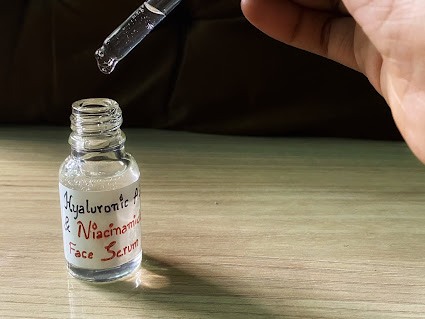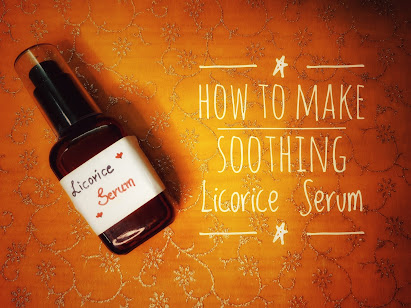What does a Face Wash contain and How to make a Fruity Face wash?
Today, we will see the basic ingredients in a face wash and how to make a basic fruity face wash.
Introduction:
Any wash off product would contain surfactants, to remove the oil and dirt, it might be face wash, shampoo, cleanser or your laundry detergent. All work in the same way, attracts the oil and flushes off with water. But how does face wash differ from laundry or kitchen detergent? It differs based on the formulation and other ingredients added to increase mildness and suit skin. Harsh surfactants without correct formulation and incorrect usage, can strip of the natural oils in the skin and will eventually dry out. Different combination of surfactants are used for different skin types.
Emulsifiers also come under surfactants but under a different category, they help in emulsification of oils and waters. Surfactants have a water loving and oil loving part which would help in combining two parts or rinsing off.
There are many articles from cosmetic formulators and professionals on how does these surfactants really work. You can check them if you are interested.
So, now that you understand face wash contains some part of surfactants aka detergents, will see the remaining ingredients. The major portion contains water (yup, water). It is not normal water, deionized and distilled water. The next one is a thickener like Xanthan Gum or HEC (Hydroxyethyl cellulose). These gums are first added in Glycerine to dissolve and hydrate completely, before adding to complete formula.
Humectants like Glycerin, propanediol is added to retain moisture in skin and not completely dry out after wash.
Cosmetic colorant (approved for face) is also added for good color. Essential Oils or Fragrance Oils are added for scent. Less than 1% is used since face is sensitive to these and can cause irritation.
Botanical extracts or ingredients like exfoliating Jojoba beads, Papaya extract, Green tea extract, Chamomile extract are added for some extra benefits and to help treat certain skin conditions.
Actives like Salicylic acid, Vitamin C is also added for skin brightening propeties.
The most important ingredient is Preservative which needs to be a broad spectrum. Natural (ECOCERT) or Synthetic preservative are found based on formulation type.
Let's now make a basic face wash for Oily and Normal skin type.
Ingredients used: (200g batch)
Surfactant Phase:
Alpha Olefin Sulphonate 12% - 24g
Decyl Glucoside 4% - 8g
Coco Betain 4% - 8g
Thickener Phase:
HEC 1% - 2g
Pomegranate Glycerite 8% - 16g
Water 67.6% - 135.2g
Remaining Phase:
Papaya Extract - 1.2% - 2.4g
Jojoba Beads (Biodegradable)- 1% - 2g
Preservative (Geogard ECT) - 1% - 2g
Banana F.O - 0.2% - 0.4g
Procedure:
We need to calculate ASM for a face wash or shampoo when surfactant is used. ASM is active surfactant matter in an ingredient. Example, AOS is 40% active means it has 40% active matter and remaining water. So, it is important to calculate ASM of a product. There are many online calculators that can be used.
1) Firstly, we will hydrate HEC. Measure HEC in a beaker and add Glycerin. Mix it thoroughly and add 35.2g of water. Stir it properly and put on a double boiler on a low flame for few minutes. Once it dissolved completely, remove it from the heat and let it rest for sometime.
2) Measure surfactants in seperate beaker and stir it without forming bubbles. Stirring it vigorously will form bubbles and foam.
3) Add remaining water to the hydrated phase and again mix it properly. Once you see it gelling consistency without lumps, it is good to add in surfactant phase.
4) Mix both the surfactant and hydrated water phase, combine it slowly.
5) Add the remaining ingredients and mix it from bottom.
6) Testing the pH is very important because Geogard ECT will be inactive if the PH is high. Will reduce the pH below 5.5 by adding few drops of 50% citric acid solution in regular intervals. It took me around 20 drops. Do not add 20 drops at a time since I added it, because surfactants from different suppliers have different ASM and different pH. If pH comes below than what you want, you need to add TEA or pH buffer to increase which would be a waste.
7) Once everything is added, let it rest for few minutes. Pour it into a flip-flop or pump bottles.
Since the pH is very high, pH strips will not give accurate results. A good pH meter is must.
Substitutions:
- Different surfactants can be used but ASM needs to be calculated again since it differs with suppliers and surfactants.
- Xanthan Gum can be used in place of HEC but usage rate would be less, not 1%
- Propanediol can be added in place of Glycerin.
- Any broad spectrum preservative would be a good replacement for Geogard ECT but check if the preservative is compatible with surfactants used.
- You can add any extract and exfoliating ingredient according to your formulation and interest.
Typical Usage rates:
AOS (Active matter- 40%): 4-30%
Decyl Glucoside (Active matter- 51%): 5%-40%
Coco Betaine (Active matter- 30%) : 4 -40%
HEC: 0.5- 3%
Geogard ECT: Upto 1%
Jojoba Beads: Upto 1%
Where to Buy Ingredients - supplier links: (Click on the links to open)
You can check my page (Where to Buy Cosmetic Ingredients and Containers in India?) for local supplier details.
Do you want to watch this on Youtube? 👉 Click Here








Comments